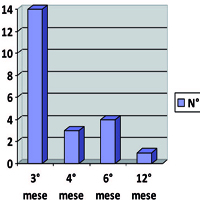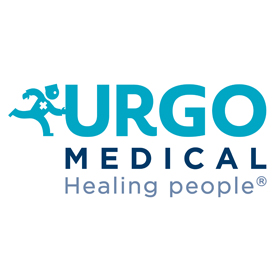Mononucleate da sangue periferico autologhe da filtrazione selettiva per il trattamento delle lesioni croniche dell'arto inferiore: Risultati a 4 anni

Ricevuto: 13 ottobre 2020
Accettato: 30 marzo 2021
Published: 30 luglio 2021
Accettato: 30 marzo 2021
Abstract Views: 340
PDF: 206
PDF (English): 54
Appendix: 0
PDF (English): 54
Appendix: 0
Publisher's note
All claims expressed in this article are solely those of the authors and do not necessarily represent those of their affiliated organizations, or those of the publisher, the editors and the reviewers. Any product that may be evaluated in this article or claim that may be made by its manufacturer is not guaranteed or endorsed by the publisher.
All claims expressed in this article are solely those of the authors and do not necessarily represent those of their affiliated organizations, or those of the publisher, the editors and the reviewers. Any product that may be evaluated in this article or claim that may be made by its manufacturer is not guaranteed or endorsed by the publisher.
Articoli simili
- Isabella Lo Castro, The role of the social community networks in the care of chronic wounds , Italian Journal of Wound Care: V. 1 N. 1 (2017)
- Giuseppe Nebbioso, C. Albanese, F. Bonat, A. Botta, Giovanni Vito Corona, Cira Costagliola, Corrado Maria Durante, Ciro Falasconi, D. Foglietti, Francesco Giacinto, Pasquale Longobardi, Klarida Hoxha, Cosimo Maglio, Vincenzo Mattaliano, Massimo Menculini, Giovanni Battista Mosti, Carmela Orefice, Sonia Remafedi, Donatella Rossolini, Felice Tafuro, Francesco Petrella, Qualità della vita nello studio Wound Care. Rapporto conclusivo , Italian Journal of Wound Care: V. 1 N. 1 (2017)
- Ciro Falasconi, Vincenzo Amalfi, Patrizia Baroni, Giovanni Vito Corona, Corrado Maria Durante, Paola Fanin, Caterina Favaro, Massimo Fornaciari, Alessandro Farris, Manuela Galleazzi, Francesco Giacinto, Giorgio Guarnera, Vincenzo Lauletta, Mario Marazzi, Marco Masina, Vincenzo Mattaliano, Giovanni Battista Mosti, Giuseppe Nebbioso, Francesco Stanganello, Francesco Petrella, Indagine conoscitiva sul dolore nel paziente con le lesioni croniche cutanee , Italian Journal of Wound Care: V. 1 N. 1 (2017)
- Aurora Parodi, Valeria Maria Messina, Teresa Cannavale, Stefania Sorbara, Andrea Francesco Pestarino, Emanuele Claudio Cozzani, Management and antisepsis in wound care: The experience of an Italian region (Liguria) in the treatment of older people affected by chronic ulcers , Italian Journal of Wound Care: V. 5 N. 2 (2021)
- Fabrizio Moffa, Alberico Balbiano da Colcavagno, Elia Ricci, Utilizzo di staminali da tessuto adiposo nelle lesioni cutanee croniche: esperienza clinica/Use of adipose tissue stem cells in chronic skin lesions: clinical experience , Italian Journal of Wound Care: V. 2 N. 2 (2018)
- Francesco Giacinto, Ciro Falasconi, Elisabetta Giacinto, Manuela Germano, Domenica Ciuffoletti, The use of modern technologies based on telemedicine in wound care: experience in high-tyrrhenian region and the province of Cosenza, Italy/L'impiego delle moderne tecnologie della telemedicina nel wound care: esperienza dell'alto tirreno cosentino , Italian Journal of Wound Care: V. 2 N. 1 (2018)
- Rolando Tasinato, Paolo Zangrande, Il trattamento topico con una matrice contenente mesoglicano in associazione ad acido ialuronico nella gestione delle ulcere cutanee croniche degli arti inferiori/Topical treatment with a matrix containing mesoglycan in association with hyaluronic acid in the management of chronic skin ulcers of the lower limbs , Italian Journal of Wound Care: V. 3 N. 2 (2019)
- Aurora Parodi, Valeria Maria Messina, Manuela Martolini, Shpresa Haxhiaj , Emanuele Claudio Cozzani , Update sul management e trattamento del paziente con lesioni cutanee croniche , Italian Journal of Wound Care: V. 5 N. 2 (2021)
- Fabio Mozzarelli, Sara Gaetti, La valutazione delle ulcere vascolari degli arti inferiori attraverso la Wound Trend Scale: l'esperienza dell'Azienda USL di Piacenza/Assessment of vascular ulcers of the lower limbs through the Wound Trend Scale: the experience of the LHA of Piacenza , Italian Journal of Wound Care: V. 2 N. 1 (2018)
- Romina Corgiat-Loia, Lucia Pavignano, Marcella Vargiu, Laura Perono Minino, Giovanna Capace, Fabrizia Cogo, Lucia Carlino, Chiara Mangolini, Marzia Soave, Eraldo Personettaz, Enrica Bertotti, Fabrizio Aprà , Carla Varola, Cristina Amato, Eleonora Aloi, Lo sguardo oltre...un percorso avviato in ASL TO4 per il trattamento delle lesioni cutanee croniche/Looking beyond...a path started in ASL TO4 for the treatment of chronic skin lesions , Italian Journal of Wound Care: V. 2 N. 2 (2018)
Puoi anche Iniziare una ricerca avanzata di similarità per questo articolo.



 https://doi.org/10.4081/ijwc.2021.69
https://doi.org/10.4081/ijwc.2021.69





